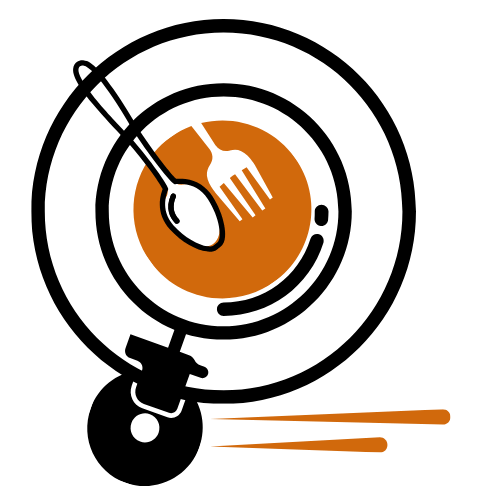bodybuilding & Fitness
From Beginner to Beast: How to Structure Your Bodybuilding Workout Plan
From Beginner to Beast: How to Structure Your Bodybuilding Workout Plan
As a beginner in bodybuilding, creating a workout plan can be overwhelming. With so many exercises, sets, reps, and variations to choose from, it’s easy to get lost in the sea of information. But fear not, my friend! In this article, we’ll take you from beginner to beast by providing you with a comprehensive guide on how to structure your bodybuilding workout plan.
Bodybuilding is a journey that requires patience, dedication, and a well-planned approach. With the right strategy, you can achieve your fitness goals and become the best version of yourself. In this article, we’ll cover the essential elements of a bodybuilding workout plan, including goal setting, workout structure, exercise selection, and progressive overload.
Section 2: Setting Your Goals
Before you start your bodybuilding journey, it’s essential to set clear and achievable goals. What do you want to achieve? Do you want to gain muscle mass, lose fat, or improve your overall physique? Setting specific goals will help you stay motivated and focused throughout your journey.
To set your goals, ask yourself the following questions:
- What is my current fitness level?
- What are my bodybuilding goals?
- What is my current weight and body fat percentage?
- What is my target weight and body fat percentage?
Once you have a clear understanding of your goals, you can start creating a workout plan that’s tailored to your needs. Remember, setting realistic goals is crucial to achieving success in bodybuilding.
Setting Realistic Goals
When setting your goals, it’s essential to make them realistic and achievable. Setting unrealistic goals can lead to frustration and burnout. Here are some tips to help you set realistic goals:
- Start with small, achievable goals
- Break down your goals into smaller, manageable steps
- Focus on progress, not perfection
- Be patient and consistent
By setting realistic goals, you’ll be more likely to stay motivated and committed to your workout plan.
Section 3: Workout Structure
The structure of your workout plan is crucial to achieving your bodybuilding goals. A well-structured workout plan should include a combination of exercises that target different muscle groups, including chest, back, shoulders, legs, and core.
Tips for Structuring Your Workout Plan
- Start with a warm-up routine that includes cardio and dynamic stretching
- Include exercises that target different muscle groups
- Incorporate compound exercises, such as squats and deadlifts
- Add isolation exercises, such as bicep curls and tricep extensions
- Finish with a cool-down routine that includes static stretching
🗓 Sample Weekly Workout Plan
Monday (Chest and Triceps):
- Warm-up: 5–10 min cardio + dynamic stretching
- Barbell bench press: 3 sets of 8–12 reps
- Incline dumbbell press: 3 sets of 10–15 reps
- Tricep pushdown: 3 sets of 12–15 reps
- Tricep dips: 3 sets of 12–15 reps
- Cool-down: 5–10 min of static stretching
Tuesday (Back and Biceps):
- Warm-up
- Pull-ups
- Barbell rows
- Dumbbell curls
- Hammer curls
- Cool-down
Wednesday: Rest Day
Thursday (Legs and Shoulders):
- Squats
- Leg press
- Standing military press
- Dumbbell shoulder press
- Cool-down
Friday: Repeat Chest & Triceps
Saturday & Sunday: Rest Dayst an example workout plan, and you should adjust it based on your individual needs and goals.
Section 4: Exercise Selection
Exercise selection is a crucial aspect of your bodybuilding workout plan. The exercises you choose should target different muscle groups and help you achieve your fitness goals.
Here are some tips to help you select the right exercises:
- Choose exercises that target multiple muscle groups at once
- Incorporate compound exercises, such as squats and deadlifts
- Include isolation exercises, such as bicep curls and tricep extensions
- Avoid exercises that put unnecessary strain on your joints
- Focus on exercises that work multiple planes of motion
Here are some examples of exercises that you can include in your workout plan:
- Squats: targets quadriceps, hamstrings, and glutes
- Deadlifts: targets back, legs, and glutes
- Bench press: targets chest, shoulders, and triceps
- Pull-ups: targets back and arms
- Bicep curls: targets biceps
- Tricep extensions: targets triceps
Remember, the key to success is to choose exercises that you enjoy and that help you achieve your fitness goals.
Section 5: Progressive Overload
Progressive overload is a crucial aspect of your bodybuilding workout plan. It refers to the gradual increase in weight or resistance that you use over time to challenge your muscles and promote growth.
Here are some tips to help you implement progressive overload:
- Start with a weight that allows you to complete the desired number of reps with good form
- Gradually increase the weight or resistance over time
- Aim to increase the weight or resistance by 2.5-5lbs every two weeks
- Focus on progressive overload for compound exercises, such as squats and deadlifts
- Avoid progressive overload for isolation exercises, such as bicep curls and tricep extensions
Here are some examples of progressive overload:
- Squats: start with 135lbs and gradually increase to 175lbs
- Deadlifts: start with 185lbs and gradually increase to 225lbs
- Bench press: start with 135lbs and gradually increase to 175lbs
- Pull-ups: start with 8 reps and gradually increase to 12 reps
Remember, progressive overload is key to promoting muscle growth and strength gains.
Section 6: Conclusion
In conclusion, structuring your bodybuilding workout plan requires a combination of goal setting, workout structure, exercise selection, and progressive overload. By following these tips and incorporating them into your workout plan, you’ll be well on your way to achieving your fitness goals and becoming the best version of yourself.
Remember, bodybuilding is a journey that requires patience, dedication, and a well-planned approach. With the right strategy, you can achieve your fitness goals and enjoy the many benefits that come with it.
By following the tips outlined in this article, you’ll be able to create a workout plan that’s tailored to your needs and helps you achieve your fitness goals. So, what are you waiting for? Start creating your bodybuilding workout plan today and get ready to take your fitness to the next level!

